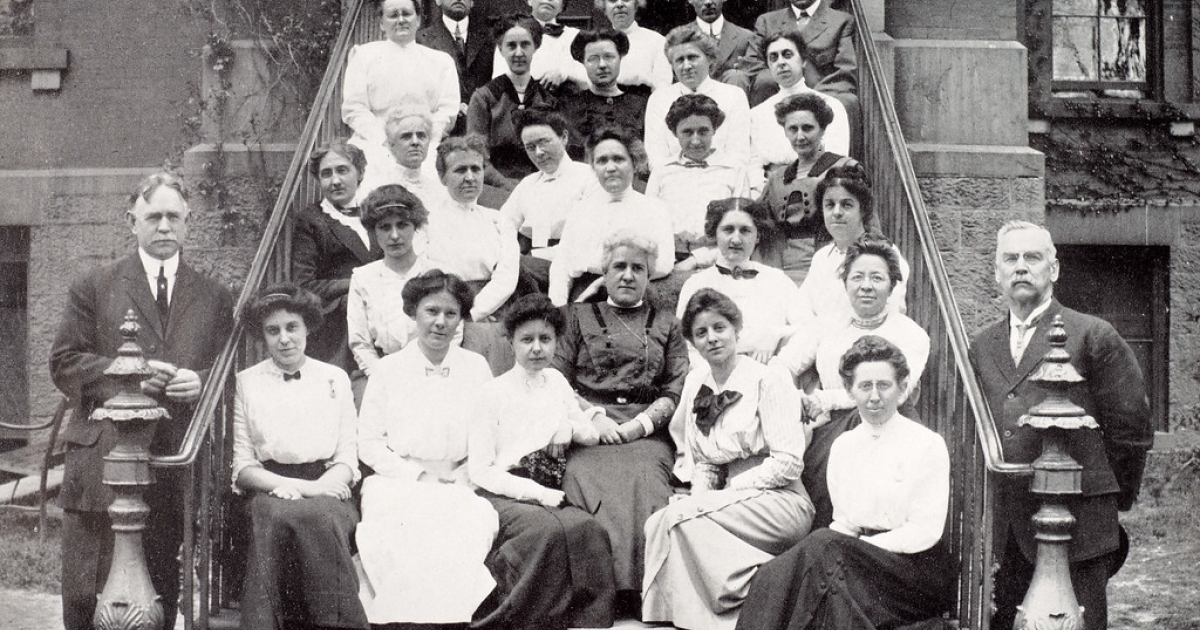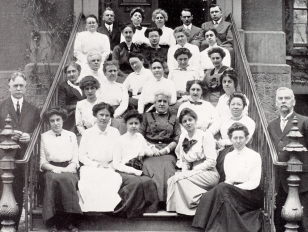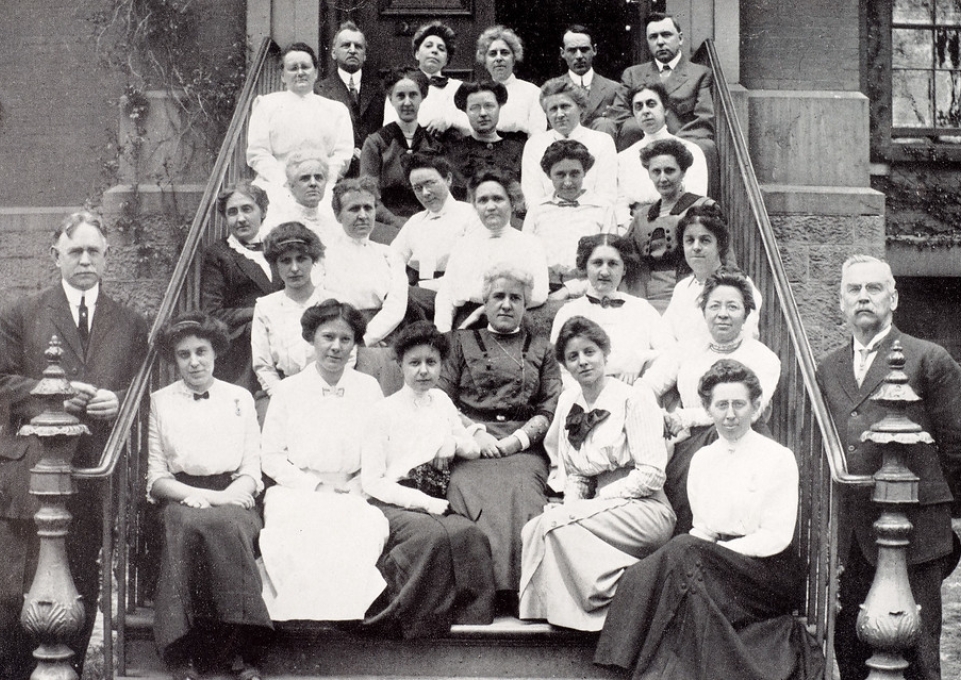
Following the Buffalo Normal School’s ostentatious cornerstone-laying ceremony of April 15, 1869, one might think that any follow-up event would be anticlimactic.
However, a few weeks after the first students began attending classes at the new school in mid-September 1871, the three-story Victorian-style building bound by Jersey, 13th, 14th, and York streets hosted its formal public opening with a fair degree of similar fanfare.
The first weeks of classes were organized but hectic. About 70 scholars in the Normal School took placement exams and started hitting the books, as did another 12 in the collegiate department. Some 200 hundred of their charges in the School of Practice also started the year by taking aptitude tests in arithmetic, geography, history, grammar, reading, writing, and spelling over the initial several days. All grade levels were full, with about 20 students per grade.
School of Practice students met on the first floor and part of the second floor of the sparkling new red-brick building. Normal School classes took place in a separate area of the building until teachers’ graduating year, whereupon they were scheduled to teach students in the School of Practice (similar to today’s student teachers) for a 20-week term.
After this bustling start of classes, the school paused on October 25, 1871—150 years ago today—to recognize its opening with a formal program that was almost as grand as the cornerstone-laying rite two years earlier. In fact, many of the same people participated, especially from among the local esteemed Presbyterian clergy.
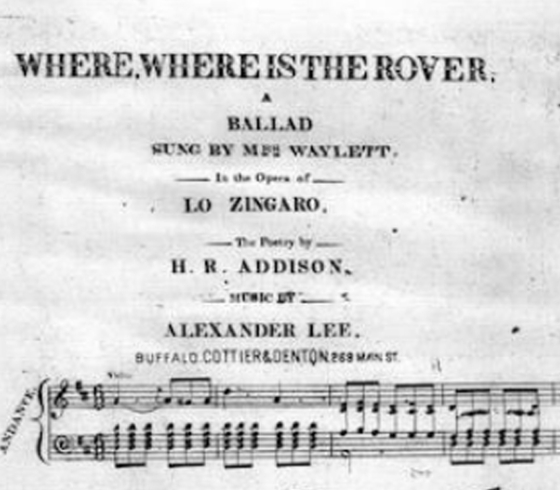
Musical interludes included a solo rendition of “Where, Where Is the Rover,” composed by Alexander Lee and Henry Robert Addison and published by Buffalo's Cottier & Denton.
It’s worth noting that in mid- to late-nineteenth-century Buffalo, the bulk of the upper-class—white Anglo-American Protestant businessmen—were Presbyterians. The congregations of the city’s eight Presbyterian churches, most of them on the same West Side turf as the new Normal School, included as members and trustees some of the wealthiest and most influential merchants, attorneys, and journalists in the northeast—men like Samuel Wilkeson, Solomon Haven, George Tifft, William Glenny, Franklin Locke, Jewett Richmond, Pascal Pratt, Dennis Bowen, Dexter Rumsey, Josiah Letchworth, and Josephus Larned. And their pastors were among the most charismatic in Western New York.
It’s no surprise, then, that the Reverends Grosvenor Heacock and Albert T. Chester were back on the stage, this time indoors in the spacious third-floor lecture room (also referred to as the chapel), for the formal opening program.
After a school choral singing of “Luther’s Hymn” at precisely 2:00 p.m.—accompanied by vocal music professor Charles W. Sykes on the organ—Heacock, of Lafayette Avenue Presbyterian Church, began with a reading of the 19th Psalm.
A series of eight (!) addresses followed, with strategically placed musical interludes: the school chorus singing “A Hymn of Peace,” and a solo rendition of “Where, Where Is the Rover,” delivered in a “beautiful and acceptable style” by one Miss Sears, a School of Practice student.
Several speakers honored the memory of Jesse Ketchum, who had died four years earlier, at age 85, and whose largesse had provided the land on which the new Buffalo Normal School now stood.

Henry B. Buckham, first Normal School principal, delivered the keynote address, “The Idea of a Normal School.”
In his return engagement to Buffalo State festivities, Chester, former pastor of North Presbyterian Church and now principal of the Buffalo Female Academy, served as the fifth speaker of the day. Chester’s own tribute to Ketchum included this sentiment: “As long as this structure stands shall he be remembered as the true friend of the children and youth; who was willing to devote time and money to anything that would promote their culture in learning or in morals.”
Normal School Principal Henry B. Buckham, for whom today’s Buckham Hall is named, was the keynote speaker. In his address, “The Idea of a Normal School,” Buckham listed four goals for the new college: to educate and train teachers at public schools; to educate the child into a man, “not a clerk or mechanic;” to equip teachers with state-of-the-art methods of instruction; and to “make scholars of our students, and teachers of our scholars.”
After the eighth and final speech had been delivered, attendees joined the college chorus in singing the traditional short hymn “Doxology,” also known as “Old Hundredth.” (The Masons had ended their cornerstone-laying ritual with the same hymn two years earlier.)
Finally, and to no one’s surprise, yet another Presbyterian preacher, Rev. Alexander McLean of Calvary Presbyterian Church, gave the benediction.
Afterward, several spectators lingered, strolling through the building in an “open house” manner.Its formal opening concluded, the Buffalo State Normal School had officially arrived on the city’s West Side, poised to fulfill its destiny.
(Key sources for this story were the Buffalo Express [September 13 and 14, 1871; October 24, 25, and 26, 1871] and the Buffalo Courier & Republic, October 26, 1871).
Top photo: Faculty members assemble on the steps of the original Normal School, 1913 Elms yearbook.
Inset photo: Henry B. Buckham, Buffalo Normal School principal 1871–1886, 1922 Elms yearbook.
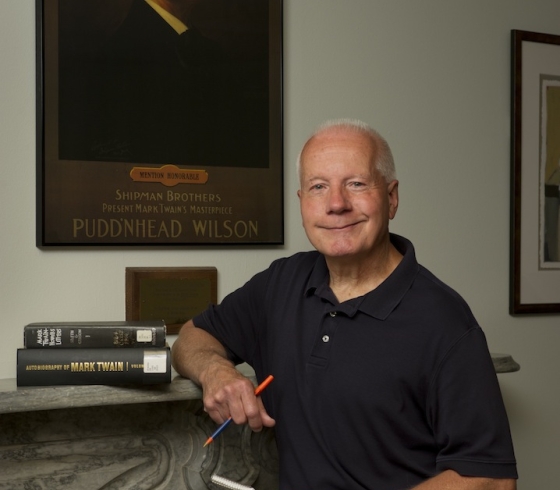
This story was contributed as part of a guest author series observing the 150th anniversary celebration of Buffalo State College. Campus authors who are interested in submitting articles or story ideas pertaining to the sesquicentennial are encouraged to contact the editor.
Tom Reigstad, Ph.D., is a professor emeritus of English who teaches a popular course on baseball and culture at Buffalo State. He is the author of Scribblin’ for a Livin’: Mark Twain’s Pivotal Period in Buffalo, and for the college’s 150th anniversary, he wrote the history of the English Department, which can be found on the department’s website.
Read other stories in the 150th anniversary guest author series:
Pomp, Pageantry Seize the Day in 1869 Normal School Cornerstone Laying
Transforming Lives for 150 Years: Memoir of a 1914 Graduate
New Buffalo Normal School Replaces Outgrown Original
The Grover Cleveland–E. H. Butler Letters at Buffalo State
From 1871 to 2021: A Short History of Education in the United States
Test Your College Knowledge with a Buffalo State Crossword Puzzle
